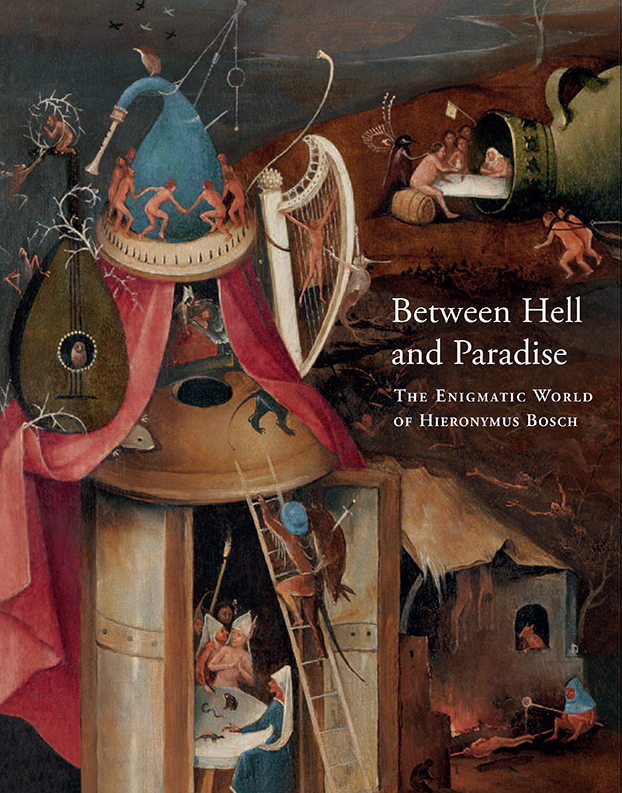
Falkenburg 2022
“In Conversation with the Garden of Earthly Delights” (Reindert L. Falkenburg) 2022
[in: Bernadett Tóth and Ágota Varga (eds.), Between Hell and Paradise – The Enigmatic World of Hieronymus Bosch. Exhibition catalogue (Budapest, Museum of Fine Arts, 8 April – 17 July 2022), Museum of Fine Arts, Budapest, 2022, pp. 76-95]
Bosch’s Garden of Delights triptych (probably commissioned by Count Engelbert II of Nassau) reminds the viewer of tapestries with courteous and amorous themes, showing garden scenes with noblemen and noblewomen, that were produced for members of the Burgundian court. Within the circles of the Burgundian court these tapestries gave rise to courtly conversation (discussions focusing on the work of art and its meaning), but also to non-verbal forms of communication, such as play, dance, ritual gestures, and so on. The large figures in the foreground of the central panel of the Garden are engaged in the same forms of verbal and non-verbal communication, and the ubiquitous consumption of fruit is another characteristic shared with the tapestries. Other details of Bosch’s painting can be associated with other aspects of Burgundian culture, such as the entertainment park in Hesdin, the Feast of the Pheasant (1454), and manuscripts of the Roman de la Rose (one of them commissioned by Count Engelbert II).
The Roman de la Rose is a dream vision, and a dream-like atmosphere also seems to hover across the interior panels of the Garden. The result of this is that the details of this phantasmal world and the actions of its inhabitants are open to manifold interpretations and associations. Many of the ‘wonders’ that can be seen in the interior panels seem to fall outside the natural order of God’s creation, and some of the shapes that appear in the exterior panels reappear in these interior panels. Are the oversized seed pods, sprouts, thorns, cracked and pierced fruit skins in the Garden signs of an undermining force (i.e. the devil), to which the inhabitants of the garden are blind, due to their state of a dream-like delusion, caused by that same force? The last line of this essay reads: ‘Conversation to be continued.’
Probably, those readers who have not read Falkenburgs monograph on the Garden (see Falkenburg 2011, itself not exactly holiday lecture) will find this essay somewhat confusing.
[explicit 21st August 2022 – Eric De Bruyn]